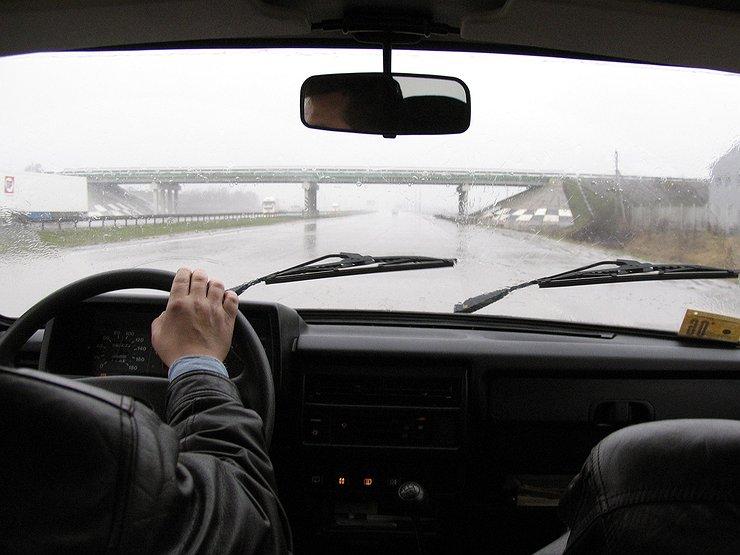
Peugeot 3008 2.0 HDi (110 kW) Premium Pack
Even the shortcomings of this Holiday Monday car did not darken its overall impression. It's true: Someone smashed the mirrors in the driver's sun visor, the automatic headlight height adjustment didn't work, the HUD was working now, not now, and the car pulls slightly to the right. But everything can be solved.
Exterior appearance? Let's just say it's something special, and it is of interest to many. And then the most important thing for the 3008: the curious looks inside and notices the unusual shape of the driver's workplace; Highly raised, dash-connected part between the driver and front passenger. It can be hard to believe as it sounds illogical and irrational, but the (proven) part can tip the scales in favor of buying this car.
This center console is good in principle: the driver's right hand rests comfortably and comfortably on it. But he is also to blame for three inconveniences. First, the box underneath has a lid that opens towards the driver, making it difficult for the front passenger to use.
Secondly, there are useful places for cans in front of the drawer, but if there is only one, it is inconvenient to switch.
And thirdly, if you need to turn the steering wheel quickly (for example, in a critical situation), the driver's right elbow crashes into the box, which means not only inconvenience, but also the likelihood that the maneuver will not be performed as the driver would like.
A person gets used to a lot if he has "higher" reasons. And we already know that weirdness attracts. Here's how things are in XNUMX: not only is the middle part different from what we're used to; The driver's seat is also something special. Somewhere the lower edge of the windshield, somewhere its upper edge, somewhere - internal rear-view mirrors, otherwise the "furniture" is placed around the driver.
The 3008 makes the best driving experience. Behind the wheel It gives the impression of being strong and compact because most of its characteristics are summarized here: driver position, exterior dimensions, interior space, dashboard design, materials, workmanship, steering wheel stiffness, steering gear and engine performance. All of the above gives a great impression of the whole.
We could actually finish recording here, but still. Other advantages should be added, for example, excellent sound insulation, which allows you to have a completely normal conversation in the cabin, even at a speed of 160 kilometers per hour, or the ease of use of this car in general.
If we skip the aforementioned good sides of the driver's workplace, we mention the ski slot, the split boot opening (the lower third of the lid is lowered to a horizontal position suitable for loading), all four automatic sliding windows in both directions, the third divisibility of the rear bench (where in one movement when stowing the backrest deepens the seat a little, and an additional lever for this is also in the trunk), window curtains in the rear side doors, a panoramic sunroof, an almost perfect audio navigation system, an effective air conditioner (requiring only temperature correction during operation, and only by degrees Celsius) , a huge number of efficient boxes and storage spaces for small items and good interior lighting, where one of the lamps in the trunk is also a portable flashlight.
We're not used to this kind of trim in this size class (the 3008 is technically a variant of the 308, which is typical of the lower middle class).
As well as deficit we find: say, slow and lack of navigation (in the city it detects a change of street too slowly and there is still no Ljubljana Šentwish tunnel in it) and slots for urine on the back bench that cannot be closed, cooling in a box between the front seats for closing or a fuel cap tank that can only be opened with a key.
This brings us to Mechanics. The 3008 also has a typical Peugeot drivetrain that is vague when shifting in place, stable when shifting slowly while driving, and literally resists it when shifting fast. I would say: he knows how to drive normally. And nothing more.
This is completely different engine in this car. Two liters and a turbocharger give this turbo diesel excellent performance, and even more, its consumption is surprising. The trip computer is a little lighter (according to our measurements, about half a liter per 100 km), but this does not affect the overall impression.
Thus, the motorized 3008 develops a speed of just under 200 kilometers per hour. consume only a good 12 liters per 100 kilometers, otherwise we found the following values while driving: at 90 km / h in third fourth gear, in fifth 3, 5 and sixth 3 liters per 9 kilometers (in the wrong direction the flow increase comes from - for too low speed in high gears), at 100 km / h in seventh fourth gear, in fifth sixth and sixth - 130 liters per 5 kilometers.
At a speed of 160 kilometers per hour, it consumes about eight liters of fuel per 100 kilometers in sixth gear, and when driving gently on the highway to the limit, it averages only seven liters per 100 kilometers.
And with such a favorable consumption, let's return to the characteristics of the engine. engine it spins easily up to 5.000 rpm, where the red field begins, but in terms of everyday use it is not known whether the driver overtakes at 4.000 rpm, and up to this value the engine is noticeably quieter, lower fuel consumption and mechanical durability - by experience - longer.
The engine is almost never out of breath, even when driving uphill and when the driver's demands are, shall we say, sporty. Even so, the chassis is not very sporty, but it still steers the wheels flawlessly in the direction the driver selects using the steering wheel.
So again: wow! Peugeot 3008 2.0 HDi is the best Peugeot at the moment. And it's convincing.
Vinko Kernc, photo: Aleš Pavletič
Peugeot 3008 2.0 HDi (110 kW) Premium Pack
Basic data
| Sales: | Peugeot Slovenia doo |
|---|---|
| Base model price: | 27.950 € |
| Test model cost: | 33.050 € |
| Calculate the cost of auto insurance | |
| Power: | 110kW (150 KM) |
| Acceleration (0-100 km / h): | 9,7 with |
| Maximum speed: | 193 km / h |
| Mixed flow ECE: | 5,6l / 100km |
Technical information
| engine: | 4-cylinder - 4-stroke - in-line - turbodiesel - displacement 1.997 cm? – maximum power 110 kW (150 hp) at 3.750 rpm – maximum torque 340 Nm at 2.000 rpm. |
|---|---|
| Energy transfer: | front wheel drive engine - 6-speed manual transmission - tires 235/45 R 18 W (Continental ContiSportContact3). |
| Capacity: | 195 km/h top speed - 0-100 km/h acceleration in 9,7 s - fuel consumption (ECE) 7,1/4,7/5,6 l/100 km, CO2 emissions 146 g/km. |
| Mass: | empty vehicle 1.529 kg - permissible gross weight 2.080 kg. |
| External dimensions: | length 4.365 mm - width 1.837 mm - height 1.639 mm - fuel tank 60 l. |
| Box: | 512-1.604 l |
Our measurements
| T = 23 ° C / p = 990 mbar / rel. vl. = 53% / Odometer Condition: 10.847 km | |
| Acceleration 0-100km: | 9,8s |
|---|---|
| 402m from the city: | 17,0 years ( 133 km / h) |
| Flexibility 50-90km / h: | 6,8 / 10,6s |
| Flexibility 80-120km / h: | 10,0 / 13,1s |
| Maximum speed: | 193km / h (WE.) |
| Minimum consumption: | 10,4l / 100km |
| test consumption: | 9,3 l / 100km |
| Braking distance at 100 km / h: | 38,2m |
| AM table: | 39m |
evaluation
Peugeot has yet to release a car that makes such a sovereign impression. The Tale 3008 with a turbodiesel in the nose is a very versatile car that will appeal to both the driver and passengers.
We praise and reproach
overall impression of robustness and compactness
engine: performance, consumption
Equipment
chassis
soundproofing
interior materials and workmanship
well-being inside, comfort
slow and imperfect navigation
turnkey fuel tank cap
check car faults
some impractical internal solutions
